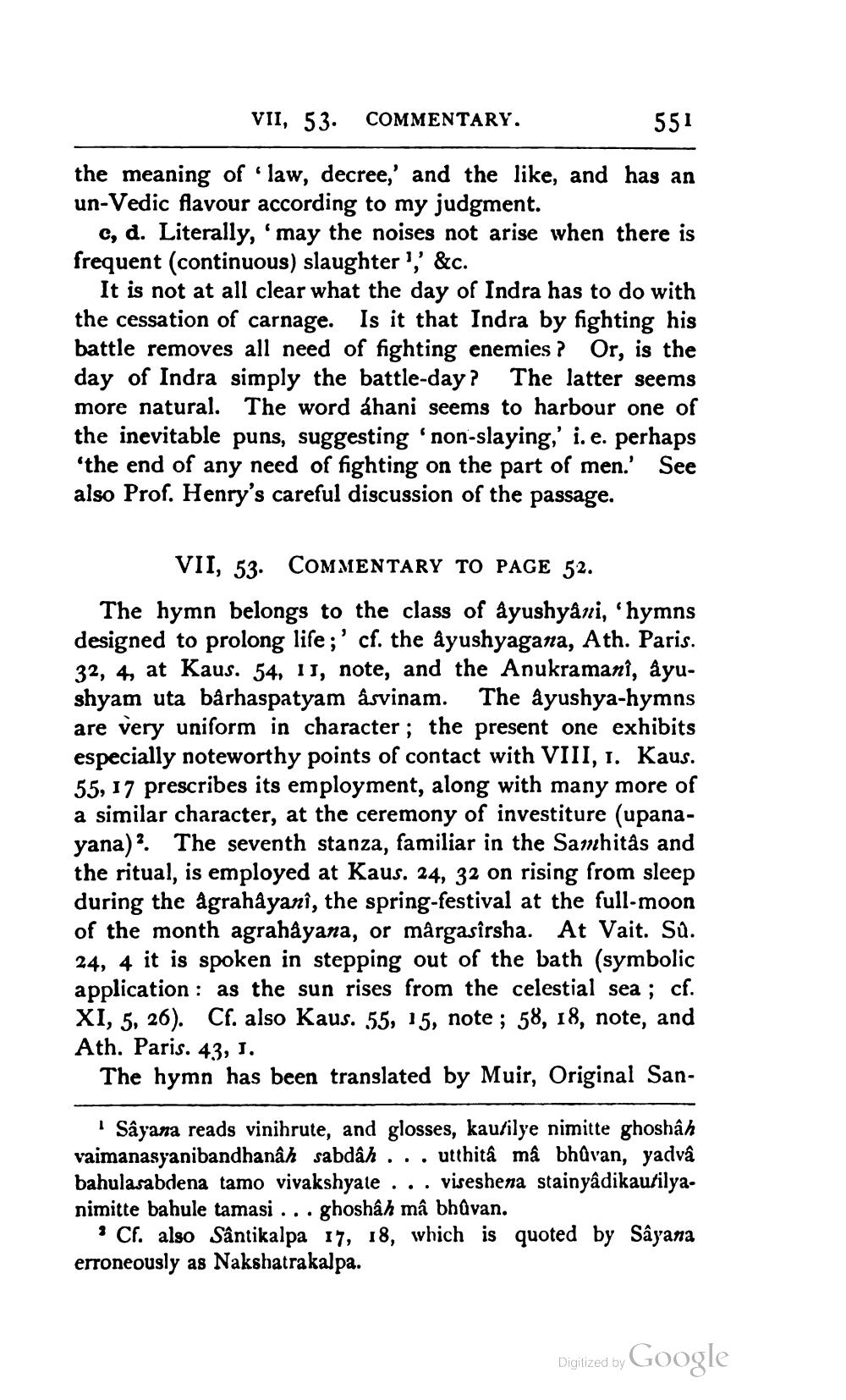________________
VII, 53. COMMENTARY.
551
the meaning of law, decree,' and the like, and has an un-Vedic flavour according to my judgment.
c, d. Literally, 'may the noises not arise when there is frequent (continuous) slaughter”' &c.
It is not at all clear what the day of Indra has to do with the cessation of carnage. Is it that Indra by fighting his battle removes all need of fighting enemies ? Or, is the day of Indra simply the battle-day? The latter seems more natural. The word áhani seems to harbour one of the inevitable puns, suggesting 'non-slaying,' i. e. perhaps 'the end of any need of fighting on the part of men.' See also Prof. Henry's careful discussion of the passage.
VII, 53. COMMENTARY TO PAGE 52. The hymn belongs to the class of ayushyani, hymns designed to prolong life;' cf. the åyushyagana, Ath. Paris. 32, 4, at Kaus. 54, 11, note, and the Anukramani, ayushyam uta bârhaspatyam ásvinam. The Xyushya-hymns are very uniform in character; the present one exhibits especially noteworthy points of contact with VIII, 1. Kaus. 55, 17 prescribes its employment, along with many more of a similar character, at the ceremony of investiture (upanayana)? The seventh stanza, familiar in the Samhitâs and the ritual, is employed at Kaus. 24, 32 on rising from sleep during the agrahayanî, the spring-festival at the full-moon of the month agrahayana, or margasîrsha. At Vait. Sû. 24, 4 it is spoken in stepping out of the bath (symbolic application : as the sun rises from the celestial sea ; cf. XI, 5, 26). Cf. also Kaus. 55, 15, note ; 58, 18, note, and Ath. Paris. 43, 1.
The hymn has been translated by Muir, Original San
Sâyana reads vinihrute, and glosses, kautilye nimitte ghoshâh vaimanasyanibandhanah sabdah ... utthita ma bhûvan, yadva bahulasabdena tamo vivakshyale ... viseshena stainyâdikautilya. nimitte bahule tamasi ... ghoshâh mâ bhûvan.
• Cf. also Sântikalpa 17, 18, which is quoted by Sâyana erroneously as Nakshatrakalpa.
Digized by Google




